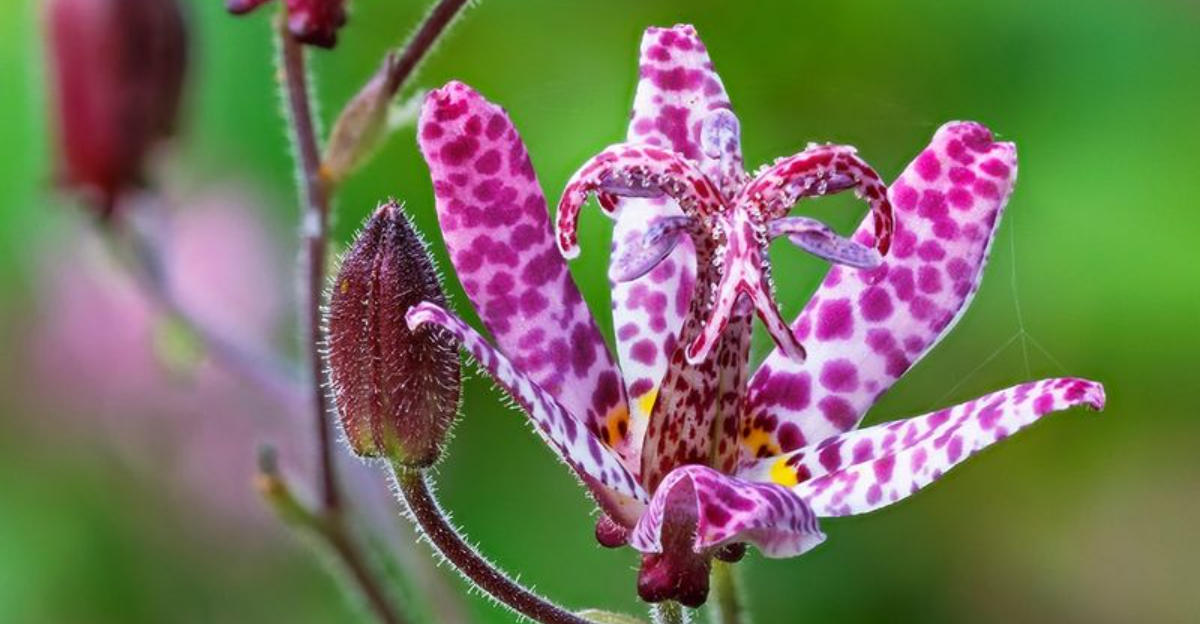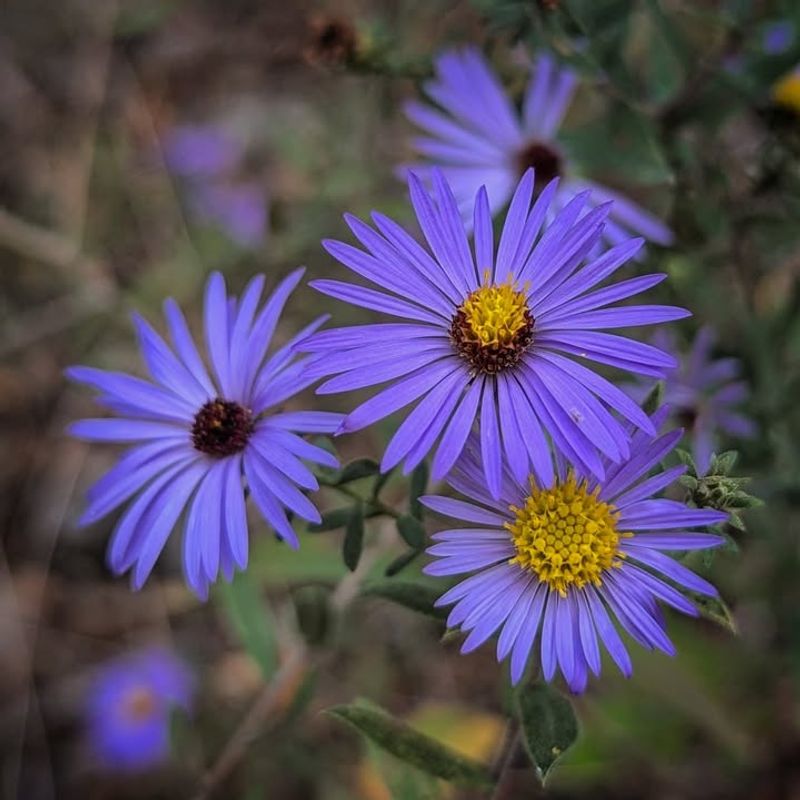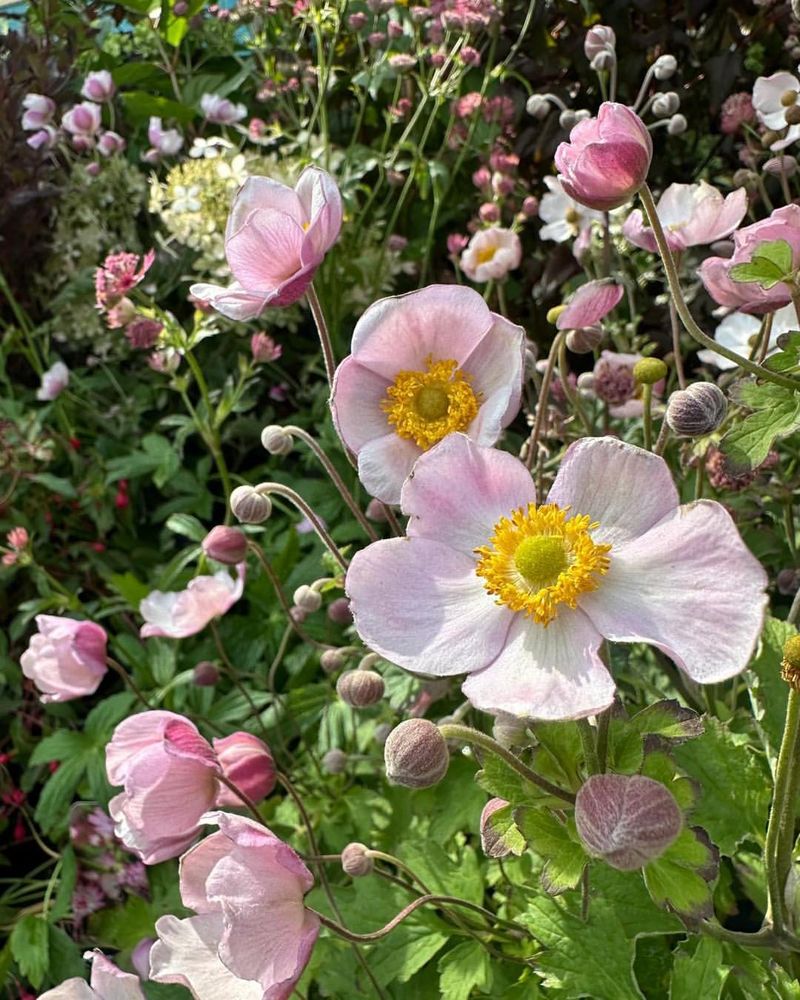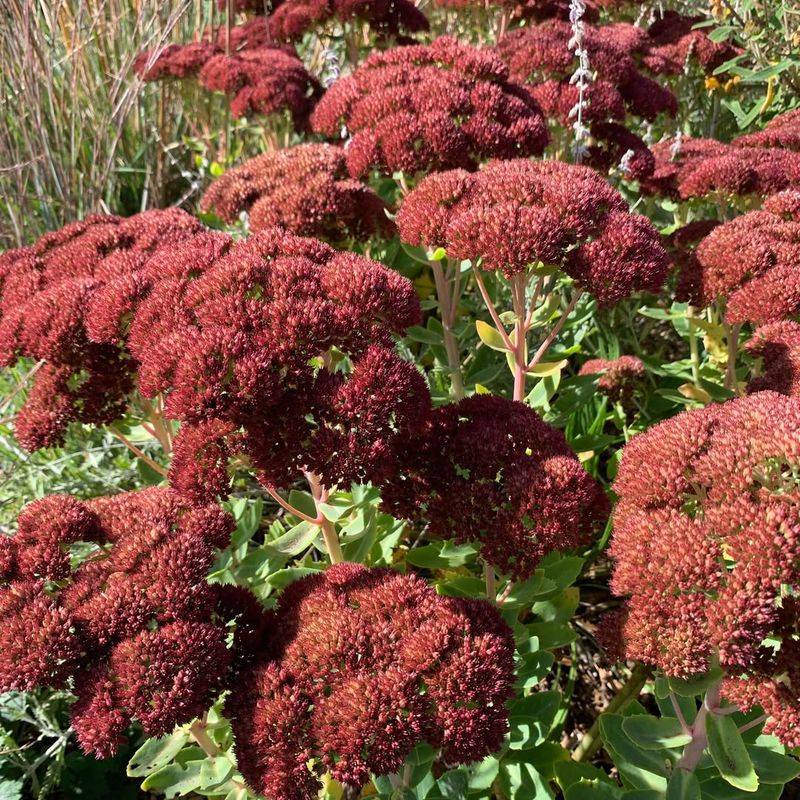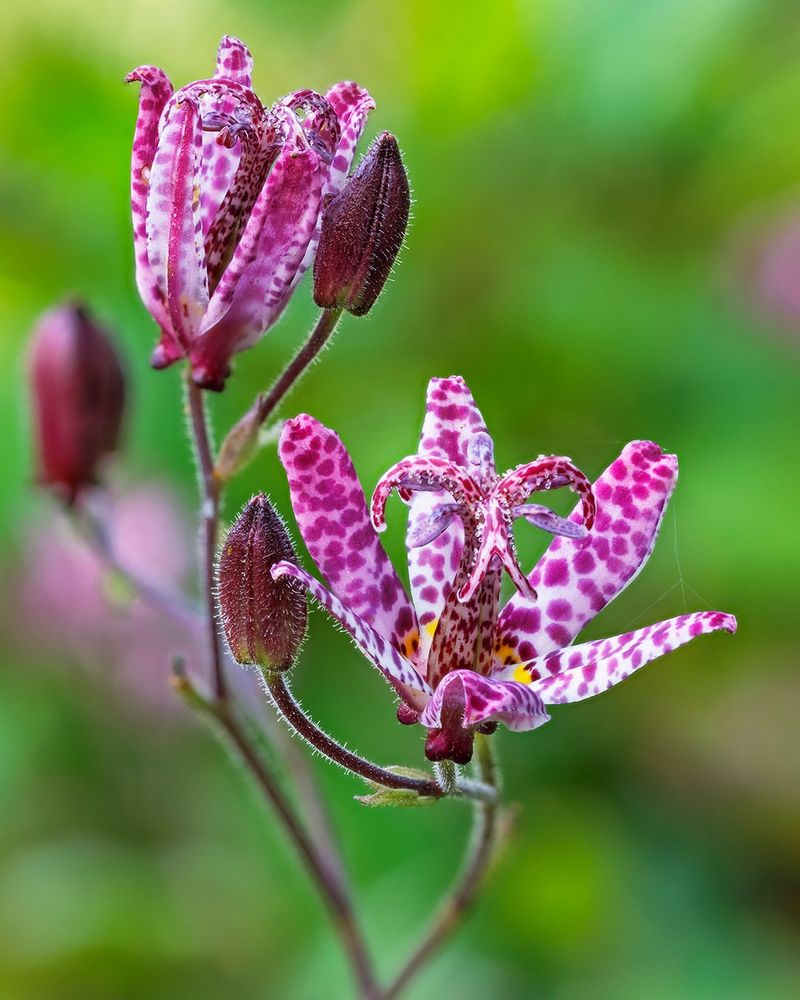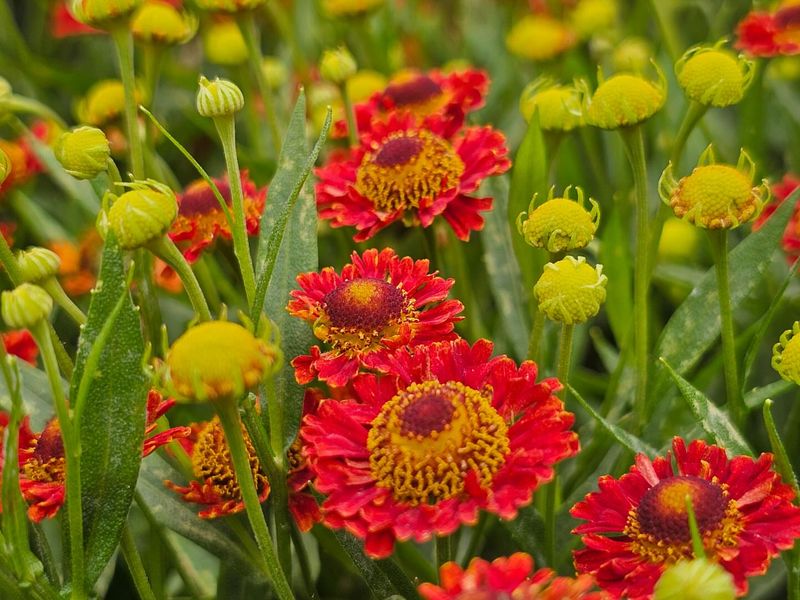Shorter days flip a switch in certain Oregon gardens, and some flowers seem to wait all year for that moment.
As daylight fades and autumn settles in, these plants finally wake up and show what they can do. I’ve watched quiet beds burst into color just as the evenings turn crisp, proving that not every bloom belongs to summer.
These flowers thrive on shorter days, using the change in light as their cue to shine.
When the rest of the garden starts slowing down, they step forward and steal the show.
1. Chrysanthemums
Nothing says autumn in Oregon quite like the cheerful face of a chrysanthemum greeting you from the garden.
Gardeners love these reliable bloomers because they wait patiently through summer, then explode with color right when shorter days arrive.
Their pompom-like flowers come in almost every shade imaginable, from deep burgundy to sunshine yellow.
Plant them in well-draining soil with plenty of sun, and they’ll reward your patience with weeks of continuous blooms that can handle light frosts without flinching, making them perfect for Oregon’s unpredictable fall weather patterns.
2. Asters
Picture tiny stars scattered across your garden beds, and you’ll understand why these flowers earned their celestial name.
Asters seem to know exactly when summer is winding down, responding to autumn’s shorter daylight hours by opening their daisy-like petals.
Pollinators absolutely adore these late-season treats, buzzing around the purple, pink, and white blooms like they’ve discovered hidden treasure.
These plants tolerate clay soil and occasional neglect while still putting on a spectacular display that bridges the gap between summer and winter beautifully.
3. Japanese Anemones
Elegant doesn’t even begin to describe these graceful beauties that dance on tall stems above dark green leaves.
Japanese anemones have a sophisticated charm that makes them favorites among Pacific Northwest gardeners who appreciate understated beauty over flashy displays.
They thrive in partially shaded spots where other fall bloomers might struggle, making them incredibly valuable for brightening up those tricky areas under trees.
Once established, these plants spread slowly to form lovely colonies that return year after year, their cup-shaped flowers swaying in autumn breezes like ballerinas performing their final curtain call.
4. Sedum Autumn Joy
Watching this succulent transform through the seasons feels like witnessing a slow-motion fireworks display in your garden.
Starting as green buds in late summer, the flower clusters gradually shift to pink, then deepen to a rich rust-red as days grow shorter and temperatures drop.
Butterflies can’t resist landing on the flat-topped blooms, which look like tiny landing pads designed specifically for them.
Oregon gardeners prize this plant for its incredible drought tolerance and ability to look interesting even in winter, when the dried flower heads add architectural interest covered in morning frost or raindrops.
5. Goldenrod
Despite its unfair reputation for causing allergies (ragweed is actually the culprit), goldenrod deserves a standing ovation for its late-season performance.
Tall spikes of brilliant yellow flowers light up gardens like natural torches when shorter days trigger their blooming response.
Native to North America, this wildflower asks for almost nothing while giving back so much, providing crucial nectar for migrating butterflies and other pollinators preparing for winter.
Goldenrod is absolutely indispensable, especially since it grows happily in poor soil and laughs at drought conditions that would stress fussier flowers.
6. Toad Lily
If orchids and lilies had a woodland baby, it might look something like these quirky, spotted beauties.
Toad lilies wait until fall’s shorter days arrive before revealing their intricately patterned flowers that look almost too exotic for the Pacific Northwest climate.
Their unusual spotted petals and arching stems bring a touch of the unexpected to shady garden corners where few other plants bloom this late.
Oregon gardeners who discover these unusual perennials often become devoted fans, appreciating how they brighten up dim areas with their star-shaped flowers that seem to glow in the fading autumn light.
7. Colchicum
Imagine flowers popping up from bare ground with no leaves in sight, like magic tricks performed by nature itself.
Colchicums earn their nickname autumn crocus by blooming when days shorten, though they’re actually related to lilies rather than true crocuses.
Their large, goblet-shaped flowers in shades of pink and purple appear suddenly in fall, while their foliage waits until spring to emerge in a backward schedule that confuses first-time growers.
Oregon gardeners plant these bulbs in late summer, then enjoy the surprise show when everyone else’s garden is winding down for the season.
8. Helenium
Bold, brassy, and unapologetically colorful, helenium brings the warmth of a sunset right into your garden beds.
These native wildflowers respond to autumn’s shorter days by opening flowers in shades of orange, yellow, and russet that practically vibrate with intensity against the season’s softer light.
Their wedge-shaped petals surround prominent brown centers that butterflies find irresistible, creating constant motion and life in the garden.
Helenium tolerates wet winter soil better than many perennials, making it perfectly suited to the Pacific Northwest’s rainy season while providing crucial late-season nectar sources.

